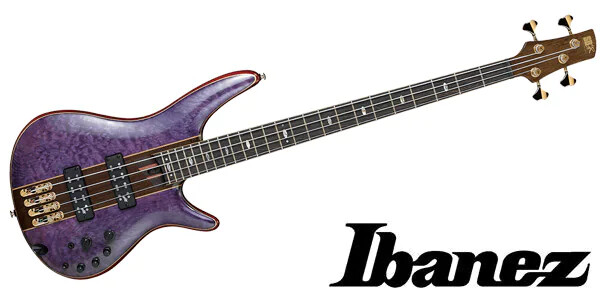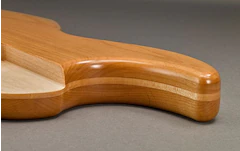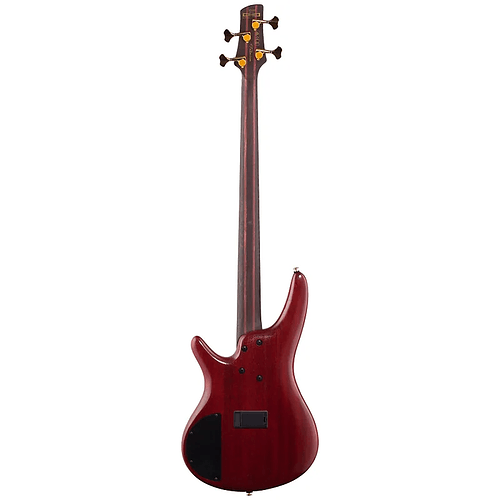Wow, that is gorgeous!
Copper is a nice finish. I am bassed out unfortunately unless I sell some
My dream bass is either a super high end Ibanez or a Ball Family Reserve Music Man. One can dream can’t they?
I’ve always wanted an Ibanez SR2400-APL.

No longer available, and I have literally never seen a used one. People love them and keep them.
Great SR looks, Aguilar pups, other hardware is top notch. Just an amazing bass. And that color is perfect for me.
I’ve played with two, perfect feel, clicked immediately.
Only $1600 new, too.
I saw it, I loved it, and then that brown headstock just… feels off. Kinda goes with the brown from the neck-thru portion, but it wouldn’t have killed them to put a wing-matching cap on the headstock. Still beautiful in its way, and of course purple 
It’s actually not a neck through, that’s just the color scheme of the SR premiums that year - dark center stripe, same with the other colors from that year.
The headstock color is the color of the neck main wood, which also has these dark pink/purple stripers:
This is good for me as I generally dislike neck-throughs due to the additional weight. This one weighs under 8 lbs. Totally love it.
The Beast is my heaviest bass and is neck-thru. Maple is heavy for sure ![]()
What causes a neck-thru to weigh more? Seems like the same amount of wood…
Maple is quite a bit more dense than most tonewoods.
so it’s not that it’s neck-thru, it’s that it’s maple?
Right. It’s also the reason that basses with maple tonewood are heavier. For example, the BB734A and BBP34 have a maple core inside an alder body and are pretty heavy, despite alder being a lighter wood.

Maybe they have done that to prevent neck dive?
They claim it is for sustain and midrange tone. It’s great for both of those but I would not be surprised to hear about neck dive avoidance either - the bass is perfectly balanced.
That’s a nice looking rig. I could see myself owning one of those…( *adds photo to "investigate further " file )
Traditionally, the back plate and ribs of violins and violas are made with maple to bring out the tones of the higher strings. The front plate and sound post are made from spruce which is best for the lower tones. Necks are often made with maple as well.
The use of the two different woods has to do with getting the full range of tones within the single hollow soundbox of the instrument. I dunno how that works when it’s sandwiched between two other pieces of wood (I’m not a luthier, though, so maybe…witchcraft?).
Interesting!
And/or maybe so the whole thing doesn’t fall apart. Spruce is a softwood. I’d imagine they need something sturdy in the mix to hold the whole thing together. And although I totally get how tonewoods actually effect tone in acoustic stringed instruments, I would bet there is some basic physics going on as well, or even more so, in wood selection.
Definitely. We haven’t even touched on whether the front or back plates are made from a single piece of wood or two pieces joined together, size and placement of tree growth rings, or the age and seasoning of the wood. All the wood used has to be dried and is often seasoned, sometimes between 30-50 years (I imagine those cuts are a bit more expensive to purchase).
I watched a CBS Sunday Morning (love that show) episode on Fazioli Pianos about the red spruce trees in a certain forest that they (and Stradivarius and others) all like the woodgrian and tone, etc. Serious business for some.
Great segment to watch.
I feel like I remember reading some article where Stradivarius (also) used wood from peat bogs or something that simply isn’t available anymore.
I bet Thanos plays one.
